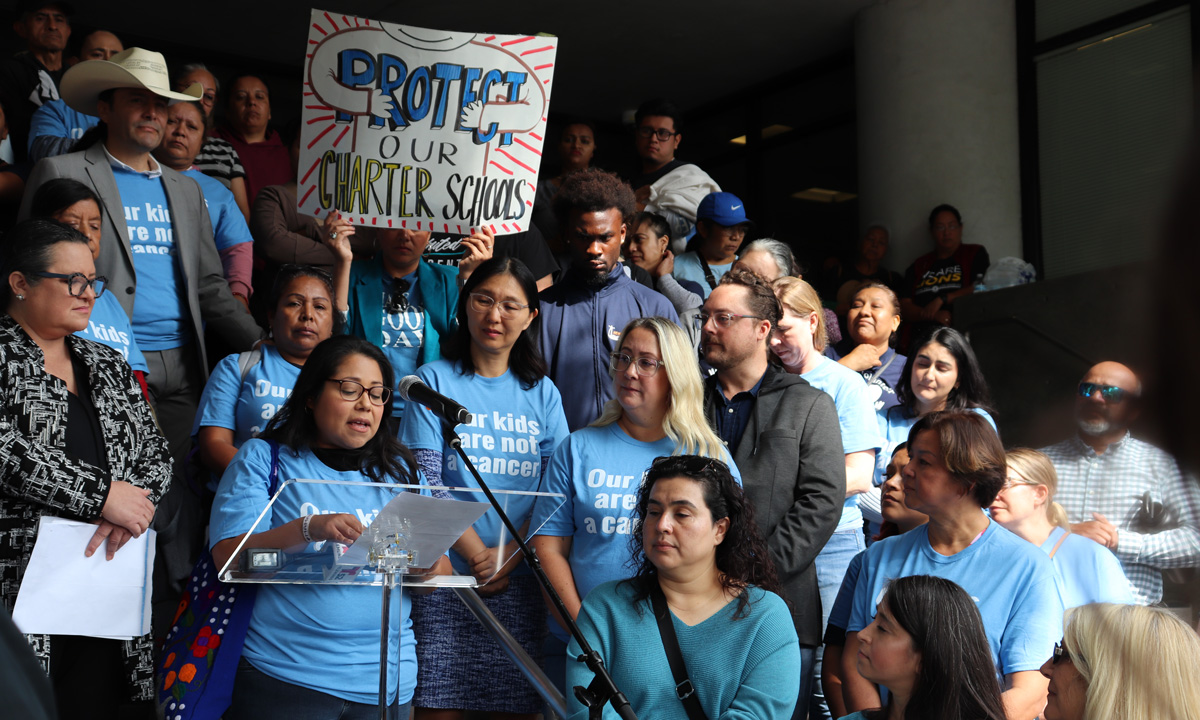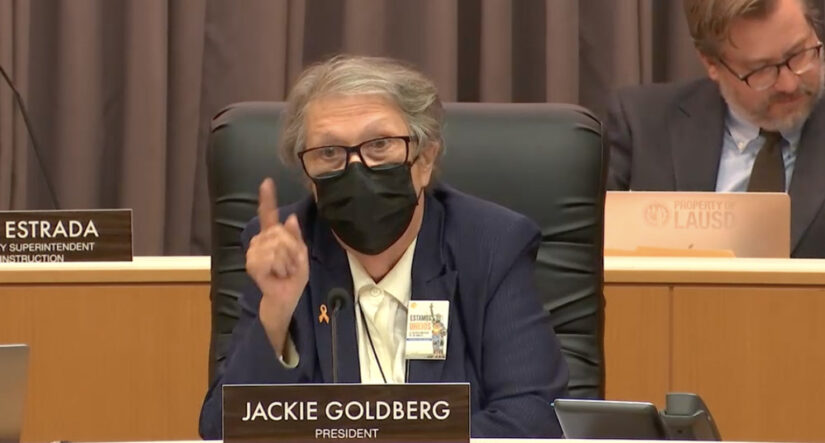Los Angeles Board Votes to Restrict Charters’ Access to Some District Schools
The action threatens to upend decades of practice in one of the more charter-rich districts in the country.

Get stories like these delivered straight to your inbox. Sign up for The 74 Newsletter
Los Angeles charters could lose access to space in nearly 350 district schools under a resolution the school board approved Tuesday. The action is likely to upend decades of practice in one of the more charter-rich districts in the country.
Superintendent Alberto Carvalho has 45 days to draft a policy that makes co-location — as the arrangement is called — off limits at schools that serve low-performing, minority and poor students.
Charter school advocates lobbied hard against the plan, arguing that it unnecessarily pits the two sectors against each other and violates a state law requiring school systems to provide classrooms for both charter and district students.
The state’s charter school association is threatening legal action.
“We will not back down from protecting the rights of students,” said Keith Dell’Aquila, an advocate for the California Charter Schools Association in the greater Los Angeles area. “The board is bringing forward this notion that charter school students only deserve the leftovers. That’s not what the law says.”
While conflict over co-location has flared up in other California districts, the tug-of-war over facilities has been most intense in Los Angeles, which is home to almost a quarter of the state’s 1,285 charters. The arrangement has offered some benefits to districts. When voters passed the co-location law in 2000, the measure made it easier to pass local school construction bonds by lowering the percentage of yes votes needed from two-thirds to 55%. That compromise seems less relevant now to board members and district staff who argue that charters squeeze district students out of space they need for everything from special education therapy rooms to clothing closets.
“There should be a sensible and reasonable way of looking at co-locations that makes it much less likely that schools that are struggling to raise student achievement will be interfered with,” board president Jackie Goldberg, who wrote the resolution with board member Rocio Rivas, said during Tuesday’s meeting. The resolution has support from United Teachers Los Angeles, and Rivas — a union-backed board member — promised to address the facility-sharing issue last year during her campaign.

Rivas and Goldberg want Carvalho to write a policy preventing co-location at schools that fall into three school improvement categories — the Black Student Achievement Plan, which provides extra staff and emphasizes culturally relevant curriculum; the 100 low-performing “priority” schools, and community schools, which offer services for families like food pantries and counseling services. These schools “have enough on their plate,” said Goldberg, who argues that co-location hurts enrollment because charters lure families away from district schools.
Karla Griego, a special education teacher running to replace Goldberg, who is retiring from the board, said co-location requires schools to relinquish classrooms often used for meetings with parents or restorative justice programs.
“This resolution protects all of the investments that the district has made in bringing innovative programs to our schools,” she told the board.
Board Member George McKenna, is also retiring from the board, which means the charter-district conflict would likely carry over into next year’s election.
‘Detrimental to families’
Those who oppose the resolution say it could actually lead to more shared facilities. If a charter school has to vacate its space, it might have to split its grades up across multiple sites. That’s what worries David Garner, the principal of Magnolia Science Academy-2, a charter.
“We believe that this resolution is detrimental to families — most importantly, high-need families,” he told The 74. Parents who depend on public transportation, he said, might not be able to send their children to his school if it has to relocate.
Magnolia Science Academy-2, part of the Magnolia Public Schools network, is currently one of seven schools — four district schools and three charters — on the same property in the San Fernando Valley region of Los Angeles County. Despite limited use of athletic facilities and other common areas, he said he has good relationships with administrators of the other schools. One of his daughters even attended Daniel Pearl Magnet High School, a district facility on the same campus.
“I’ve been on both sides of the district and charter space,” he said. “I don’t care about the politics; I just care about what the kids and the families want.”
Goldberg said the vote won’t disrupt the 52 current co-location sites. But Dell’Aquila isn’t convinced, and said it will depend on how Carvalho writes the policy. The association wants the district to offer co-located charters long-term facility agreements to create more stability for staff and families.
The meeting underscored long-standing confusion over which spaces are available to charters. Goldberg said she’s always understood the law to say that charters could take over any empty classroom not assigned to a certified teacher with a roster of students. That interpretation would favor charter schools because it would make more rooms used for a variety of purposes, including the arts, STEM or discipline programs, up for grabs.
But José Cole-Gutiérrez, who runs the district’s charter school division, said that was a district practice and not written into state law. McKenna added that no one challenged it while charter-friendly board members were in the majority.
Rivas called the revelation an “injustice” that has disadvantaged district schools for years.
Carvalho, meanwhile, said ambiguity over the issue has only contributed to the conflict.
The superintendent’s challenge is to write a policy that protects the district from litigation. The charter association has sued the district three times over facility arrangements and in a Tuesday letter, accused the district of having a “sordid history of undermining and not complying” with the law.
The resolution has been unpopular, not just with charter supporters, but also among organizations that work closely with the district.
Ana Teresa Dahan, managing director of GPSN, a nonprofit advocacy group that opposed the resolution along with 25 other organizations, said she understands the challenges on both sides. It’s difficult for district schools to plan for growth because they don’t know which classrooms they might have to give up. Charters, meanwhile, have to frequently relocate and struggle to find “normal” office and cafeteria space.
“Clearly, there’s a need for a better policy,” she said. But she called Tuesday’s resolution a “failure-to-launch effort” because it still favors district schools. Ultimately, she said, it will be difficult to implement anything that completely resolves the dispute.
“There’s no uniform way that all of these campuses use their space. Every school prioritizes their space differently,” she said. “I don’t know how a school board can make these decisions.”
Get stories like these delivered straight to your inbox. Sign up for The 74 Newsletter


